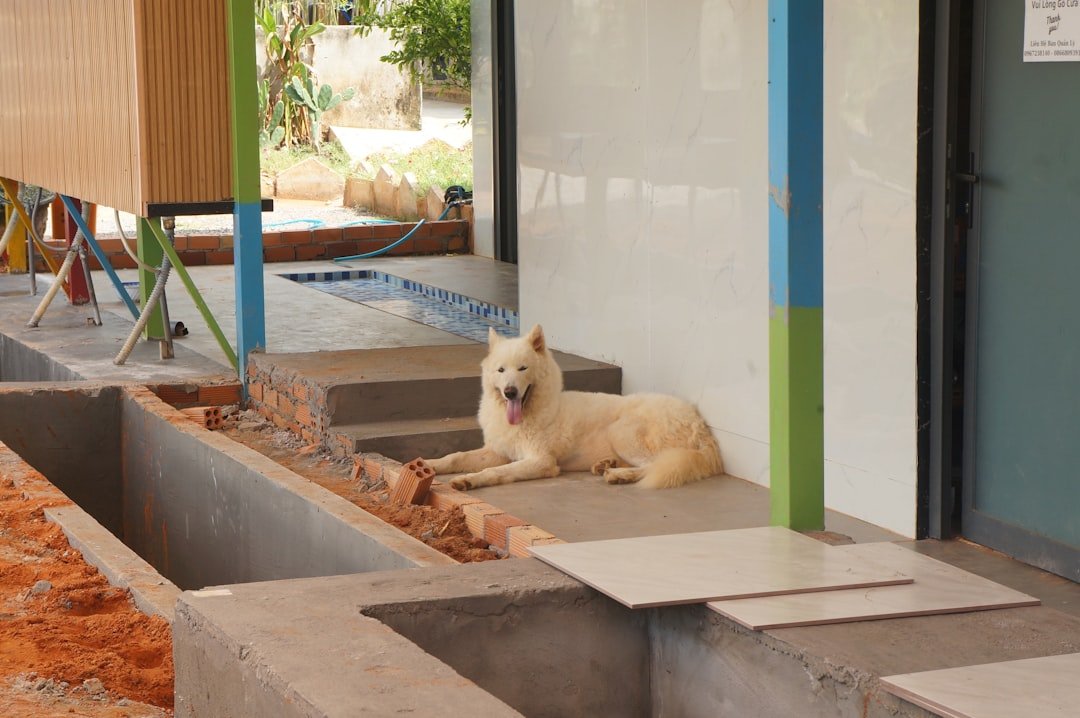On a busy summer afternoon, a shelter director in Phoenix walks past a row of kennels and watches the decibel reader spike like a siren. This is the old problem: animals arrive scared and stressed, and the building itself can make things worse. The new solution, emerging from behavior science, is surprisingly architectural. Designers and veterinarians are reading posture, vocalizations, and social signals the way engineers read blueprints, and the floor plans are changing. What started as a humane impulse is becoming a data-informed movement that reshapes walls, doors, and even the color of floors to better match how animals think and feel.
The Hidden Clues

What does a tucked tail say to a builder or a funding board weighing square footage versus soundproofing? It says stress, and stress translates into slower healing, more illness, and longer stays that strain budgets. Behavioral markers – like lip-licking in dogs or low, crouched postures in cats – now inform where sightlines go and how far apart kennels should be to blunt visual triggers. I remember stepping into a shelter where a simple curtain between runs quieted the room within minutes, a small fix born from big behavioral insights. Care teams increasingly chart these clues the way clinicians chart vitals, making them the first drafts of design specs. When a facility listens to those signals, the building stops arguing with the animals and starts cooperating with them.
From Ancient Tools to Modern Science

Early shelters were built for containment, not comfort, and it shows in the long corridors and echo-prone tiles that still haunt many older facilities. Over the past two decades, veterinary behavior research and shelter medicine have pulled design out of habit and into hypothesis testing. Double-compartment cat housing, for instance, emerged from the simple insight that animals need clean separation between resting, eating, and toileting to feel safe. Dog runs shifted toward flexible visual barriers because face-to-face standoffs elevate arousal for everyone in the room. Enrichment moved from a “nice extra” to a requirement, and that pushed architects to integrate storage, scent-delivery points, and quiet rooms into the plans. The blueprint became a living document, taking cues from ethology as much as from code requirements.
Design in Motion

The behavior-first shelter is a choreography, not just a layout, and it starts with orchestrating what animals see, hear, and smell. Acoustic treatments now dampen the harsh barks that ricochet down concrete halls, keeping noise within healthier ranges that allow rest and calm exploration. Sightline management – angled kennel fronts, partial frosted panels, and staggered runs – prevents the repetitive stare-downs that fuel barrier frustration. Airflow and odor become tools, too, channeling fresh scents and reducing the chemical smell that can feel like static to sensitive noses. Even floor textures change gait and confidence, with non-slip surfaces helping nervous dogs move more naturally through unfamiliar spaces. The result is a quiet, breathable building that nudges bodies out of fight-or-flight and into curiosity.
The Stress Equation

Stress is a biological cascade – hormones spike, immune systems falter, behavior skews toward survival – and design can tip that equation the right way. By creating zones of choice, such as elevated perches for cats and retreat alcoves for dogs, shelters give animals control over distance and vantage point, two powerful regulators of fear. Predictable routines, signaled by lighting and staff flow, teach animals that human approaches mean good things and not surprises. Small features carry big weight: a door that swings quietly, a latch that doesn’t clang, a feeder placed away from litter so mealtime feels safe. Behavioral observation turns into iterative changes, and teams learn to check whether a calmer room coincides with lower pacing, fewer stress yawns, and easier handling. The equation shifts from managing crises to preventing them.
Field Trials and Measurable Wins

When shelters pilot behavior-driven upgrades, the readouts are unglamorous but compelling: softer rooms, fewer coughs, smoother adoptions. After adding hiding boxes and portals, many facilities report cats settling faster, showing more social behaviors during visits, and maintaining better appetites – small signals that predict readiness for adoption. Playgroups designed around canine body language help dogs practice polite greetings and burn nervous energy, which often translates into calmer kennel behavior that appeals to adopters. Staff note that acoustic panels reduce the end-of-day exhaustion that comes from shouting over barks, and that fresh-air strategies lower lingering odors that can send visitors out the door. Volunteers find handling less daunting when animals display more approach behaviors and fewer stereotypies. The numbers that matter – length of stay and return rates – tend to move in the right direction when the building acts like a partner.
Global Perspectives

Across regions, behavior-centered design bends to local realities like climate, urban density, and cultural expectations, but the shared thread is choice and calm. Northern European facilities often invest in daylighting and communal cat rooms with escape shelves, reflecting a philosophy that social housing can thrive when animals choose contact. In hotter regions, shaded outdoor runs, evaporative cooling, and low-glare surfaces help dogs stay active without tipping into heat stress that fuels irritability. Dense cities gravitate toward modular pods and stacked ventilation that isolate airborne pathogens while preserving sightline control. Rural shelters, with more land but fewer dollars, may retrofit with low-cost solutions such as movable barriers, DIY sound baffles, and portable enrichment carts. Wherever the pin on the map lands, the blueprint starts with the species and ends with the neighborhood.
Why It Matters

Behavior-informed design is not just kinder; it is operationally smarter and economically sound compared with traditional rows of echoing cages. Buildings that lower stress reduce disease transmission and handling risks, which means fewer medical costs and safer work for staff and volunteers. Calmer animals show better during meet-and-greets, turning visitors into adopters at a steadier clip than facilities that rely solely on training after the fact. Traditional approaches often try to “fix” behavior that the building keeps breaking, an expensive loop that burns out teams and budgets. By contrast, a design that aligns with species needs acts like a silent staff member, keeping arousal down and recovery up all day long. The payoff is a shelter that serves animals and people without grinding its caregivers to dust.
The Future Landscape

Next-generation shelters are embracing sensors, computer vision, and bioacoustics to read welfare in real time and tweak environments on the fly. Imagine systems that flag rising bark intensity, dim lights in response, and cue soothing soundscapes while staff head to the hotspot with treats and leashes. Computer vision could track posture and pacing across kennels to identify animals who need intervention long before they shut down or explode, while airflow monitors adjust ventilation to move stress-inducing odors out. Materials science is entering the scene with antimicrobial, low-glare, sound-absorbing surfaces that clean easily without the sharp smells that bother sensitive noses. Modular housing will let facilities reconfigure for kitten season, disaster response, or outbreaks without tearing down walls. The frontier is a shelter that senses welfare the way a good handler does and reshapes itself minute by minute.
Conclusion

Ask your local shelter what behavior-informed changes they’ve made, and if they need help funding simple upgrades like portals, acoustic panels, or hiding boxes. Volunteer for enrichment shifts, where a few quiet minutes of reading to a dog or arranging perches for a cat can change how they present to adopters. If you foster, set up choice-rich spaces at home – soft retreats, non-slip mats, and predictable routines – and share what works so the shelter can fold it into design. Advocate with city councils and donors for capital plans that prioritize sound control, sightline management, and fresh air as core welfare features, not luxuries. Most of all, treat shelter buildings as living tools guided by behavior science, because every calmer room is a shorter stay and a safer handoff to a new home.

Suhail Ahmed is a passionate digital professional and nature enthusiast with over 8 years of experience in content strategy, SEO, web development, and digital operations. Alongside his freelance journey, Suhail actively contributes to nature and wildlife platforms like Discover Wildlife, where he channels his curiosity for the planet into engaging, educational storytelling.
With a strong background in managing digital ecosystems — from ecommerce stores and WordPress websites to social media and automation — Suhail merges technical precision with creative insight. His content reflects a rare balance: SEO-friendly yet deeply human, data-informed yet emotionally resonant.
Driven by a love for discovery and storytelling, Suhail believes in using digital platforms to amplify causes that matter — especially those protecting Earth’s biodiversity and inspiring sustainable living. Whether he’s managing online projects or crafting wildlife content, his goal remains the same: to inform, inspire, and leave a positive digital footprint.




